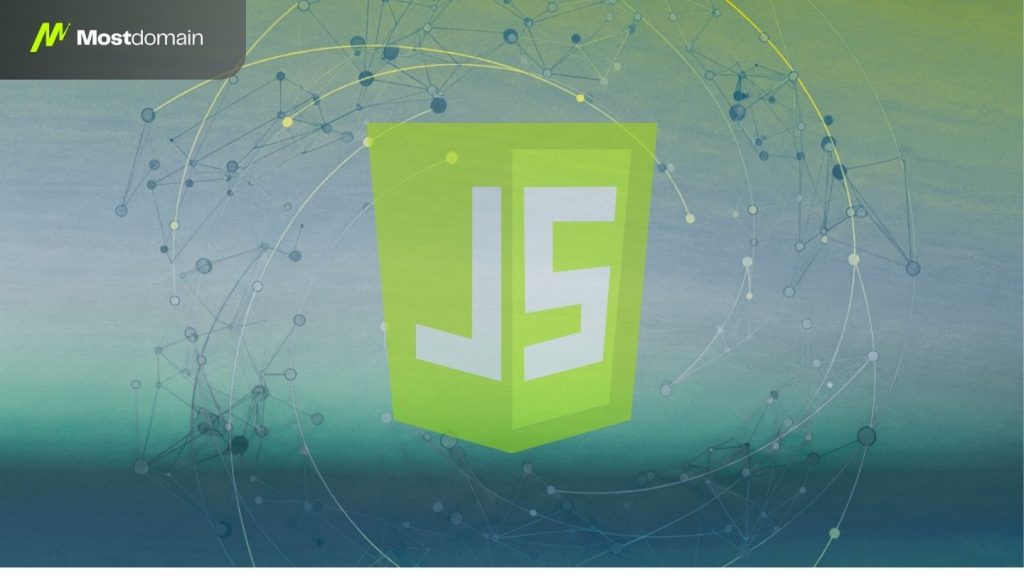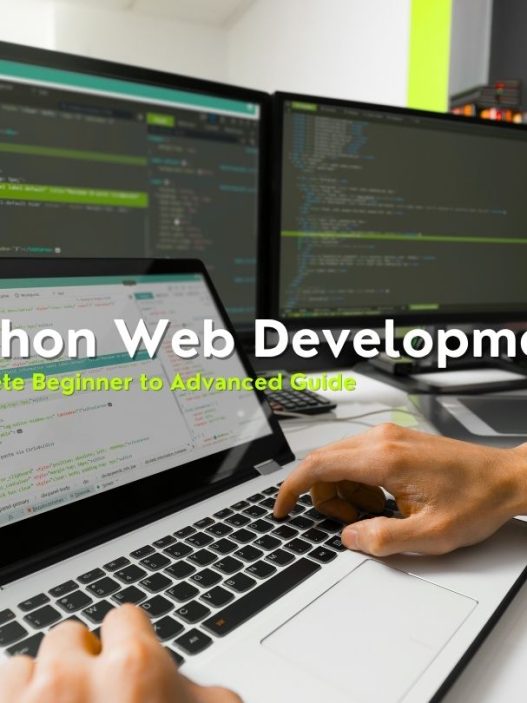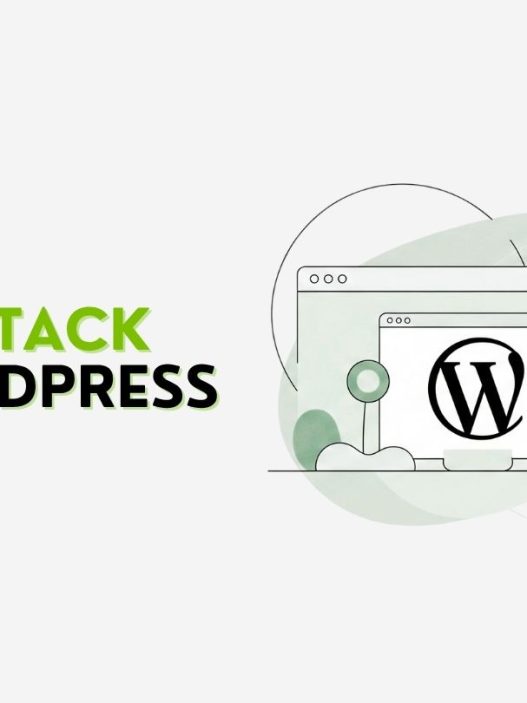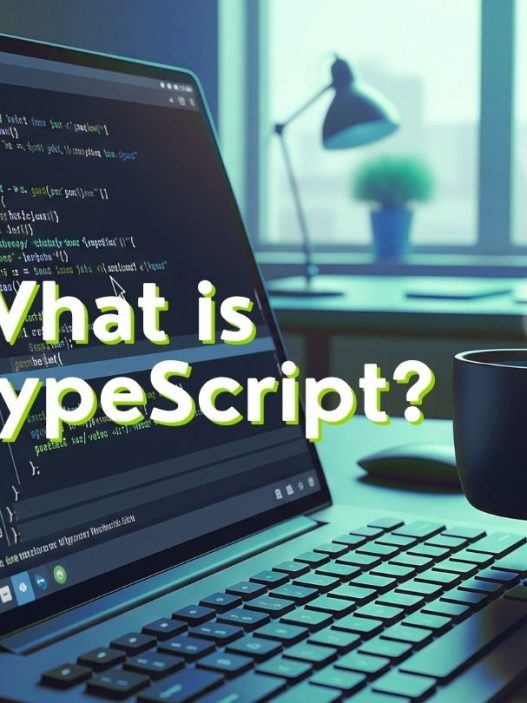This comprehensive JavaScript tutorial will take you from complete beginner to expert level, covering everything you need to master JavaScript in 2025. In an era where 98.8% of websites globally rely on JavaScript as their client-side programming language, mastering this versatile technology has become not just an advantage—it’s an absolute necessity for anyone serious about web development.
Whether you’re a complete beginner taking your first steps into programming or an experienced developer looking to stay current with the latest trends, this guide will equip you with everything you need to excel in the JavaScript landscape of 2025.
The statistics speak volumes: JavaScript has maintained its position as the world’s most popular programming language for eleven consecutive years, with no signs of slowing down.
From powering interactive websites to enabling server-side development through Node.js, JavaScript’s versatility continues to reshape how we build digital experiences across industries ranging from finance and healthcare to e-commerce and entertainment.
Why Does JavaScript Continue to Rule the Web in 2025?
The dominance of JavaScript in 2025 isn’t accidental—it’s the result of continuous evolution and adaptation to modern development needs. Unlike many programming languages that serve specific purposes, JavaScript has successfully expanded from a simple scripting language to a full-stack development powerhouse.
Market dominance remains unprecedented: With approximately 97% of websites using JavaScript, it has become the undisputed language of the web. This widespread adoption creates a self-reinforcing cycle where more developers learn JavaScript, leading to more tools, frameworks, and job opportunities, which in turn attracts even more developers to the ecosystem.
What Makes JavaScript Different from Other Programming Languages?
JavaScript’s unique position stems from several key characteristics that set it apart from traditional programming languages. Its event-driven, interpreted nature allows for rapid development and immediate feedback, making it ideal for both beginners and experienced developers who need to prototype quickly.
The language’s versatility across platforms is perhaps its greatest strength. While languages like Python excel in data science and Java dominates enterprise applications, JavaScript seamlessly operates across frontend interfaces, backend servers, mobile applications, desktop software, and even Internet of Things devices.
| JavaScript vs Other Languages | JavaScript | Python | Java | C++ |
| Learning Curve | Moderate | Easy | Difficult | Very Difficult |
| Platform Versatility | ✅ High | ✅ High | ✅ Medium | ❌ Low |
| Job Market Demand | ✅ Very High | ✅ High | ✅ High | ✅ Medium |
| Development Speed | ✅ Fast | ✅ Fast | ❌ Slow | ❌ Very Slow |
| Community Support | ✅ Excellent | ✅ Excellent | ✅ Good | ✅ Good |
How Big Is the Global JavaScript Job Market?
The employment landscape for JavaScript developers in 2025 presents unprecedented opportunities across multiple industries. According to industry surveys, JavaScript developers command an average salary of $102,449 in the United States, with specialized React developers earning up to $91,000 annually.
The demand extends far beyond traditional tech companies. Financial institutions use JavaScript for trading platforms, healthcare organizations rely on it for patient management systems, and e-commerce giants depend on it for seamless shopping experiences. This cross-industry adoption ensures job security and diverse career paths for JavaScript professionals.
Industry Insight: “JavaScript’s universal applicability means developers can transition between industries without learning entirely new programming languages, making it the most career-flexible skill in technology today.” – Tech Industry Report 2025
What Are the JavaScript Fundamentals Every Developer Must Know?
Building a solid foundation in JavaScript requires understanding its core concepts that remain consistent regardless of frameworks or libraries you’ll eventually use. These fundamentals form the building blocks for everything from simple website interactions to complex web applications.
Modern JavaScript development emphasizes clean, readable code that follows current best practices. The language has evolved significantly from its early days, incorporating features that make development more efficient and less error-prone.
How Do Variables and Functions Work in Modern JavaScript?
Understanding variables and functions represents the cornerstone of JavaScript programming. The language offers multiple ways to declare variables, each with specific use cases and scope behaviors that directly impact how your code executes.
ES6+ features have revolutionized variable declaration with let and const, providing block-level scoping that prevents common programming errors. These modern approaches replace the older var keyword in most situations, offering better control over variable accessibility and modification.
// Modern variable declarations
const userName = "JavaScript Developer"; // Cannot be reassigned
let userScore = 0; // Can be reassigned within scope
var oldStyleVariable = "Avoid using this"; // Function-scoped, outdated
// Modern function declarations
const calculateTotal = (price, tax) => {
return price + (price * tax);
};
// Advanced function features
const processUserData = async (userData) => {
try {
const result = await fetchUserInfo(userData);
return result;
} catch (error) {
console.error("Processing failed:", error);
}
};Function evolution in JavaScript includes arrow functions, async/await patterns, and destructuring parameters. These features not only make code more concise but also improve readability and maintainability—crucial factors in professional development environments.
What’s the Deal with DOM Manipulation and Event Handling?
DOM (Document Object Model) manipulation remains at the heart of frontend JavaScript development, enabling dynamic interactions that transform static websites into engaging user experiences. Understanding how to effectively select, modify, and respond to HTML elements is essential for any web developer.
Event handling has evolved beyond simple click listeners to encompass complex user interactions including touch gestures, keyboard shortcuts, and custom events. Modern approaches emphasize performance optimization and user experience considerations that weren’t priorities in earlier web development eras.
// Modern DOM manipulation techniques
const interactiveButton = document.querySelector('#action-button');
const resultContainer = document.querySelector('.results-container');
// Event handling with modern features
interactiveButton.addEventListener('click', async (event) => {
event.preventDefault();
// Visual feedback
interactiveButton.classList.add('loading');
try {
const data = await fetchAPIData();
resultContainer.innerHTML = `
<div class="success-message">
<h3>Operation Successful!</h3>
<p>Data loaded: ${data.length} items</p>
</div>
`;
} catch (error) {
resultContainer.innerHTML = `
<div class="error-message">
<h3>Operation Failed</h3>
<p>Please try again later</p>
</div>
`;
} finally {
interactiveButton.classList.remove('loading');
}
});What Advanced JavaScript Concepts Matter Most in 2025?
Professional JavaScript development requires mastery of advanced concepts that separate junior developers from senior practitioners. These concepts become increasingly important as applications grow in complexity and scale.
Asynchronous programming has become fundamental rather than optional, with modern web applications heavily relying on API communications, real-time updates, and background processing that would be impossible with synchronous-only approaches.
How Does Asynchronous Programming Actually Work?
Asynchronous programming in JavaScript centers around the event loop—a concept that initially confuses many developers but becomes intuitive with proper explanation and practice. Understanding how JavaScript handles multiple operations simultaneously despite being single-threaded is crucial for building responsive applications.
Promises and async/await have largely replaced callback-based patterns, providing cleaner syntax and better error handling for complex asynchronous operations. These patterns enable developers to write code that reads almost like synchronous operations while maintaining non-blocking behavior.
// Promise-based approach
const fetchUserProfile = (userId) => {
return fetch(`/api/users/${userId}`)
.then(response => response.json())
.then(userData => {
return fetch(`/api/users/${userId}/preferences`)
.then(prefResponse => prefResponse.json())
.then(preferences => ({
...userData,
preferences
}));
});
};
// Modern async/await approach
const fetchUserProfile = async (userId) => {
try {
const userResponse = await fetch(`/api/users/${userId}`);
const userData = await userResponse.json();
const prefResponse = await fetch(`/api/users/${userId}/preferences`);
const preferences = await prefResponse.json();
return {
...userData,
preferences
};
} catch (error) {
console.error('Failed to fetch user profile:', error);
throw new Error('User profile unavailable');
}
};What Performance Optimization Techniques Actually Matter?
Performance optimization in JavaScript involves understanding both theoretical concepts and practical implementation strategies. Code splitting, lazy loading, and efficient memory management have become essential skills as web applications handle increasingly complex tasks and larger datasets.
Modern bundling tools like Webpack, Vite, and Rollup automate many optimization processes, but developers must understand the underlying principles to make informed decisions about application architecture and deployment strategies.
| Optimization Technique | Impact Level | Implementation Complexity | Use Case |
| Code Splitting | ✅ High | 🔶 Medium | Large applications |
| Lazy Loading | ✅ High | 🟢 Low | Image-heavy sites |
| Memory Management | ✅ Very High | 🔴 High | Data-intensive apps |
| Bundle Optimization | ✅ High | 🔶 Medium | Production deployment |
| Caching Strategies | ✅ Very High | 🔶 Medium | API-dependent apps |
Which JavaScript Frameworks Should You Learn in 2025?
The JavaScript framework landscape continues evolving rapidly, with established players maintaining dominance while innovative newcomers challenge traditional approaches. Choosing the right framework depends on project requirements, team expertise, and long-term maintenance considerations.
Framework popularity doesn’t always correlate with the best choice for specific projects. Understanding each framework’s strengths, weaknesses, and ideal use cases enables informed decision-making that aligns with project goals and constraints.
React vs Angular vs Vue: Which Framework Wins?
React maintains its leadership position with an 82% “will use again” score among developers, continuing its seven-year dominance in the JavaScript ecosystem. Its component-based architecture and extensive ecosystem make it particularly suitable for large-scale applications and teams with varying skill levels.
Angular appeals to enterprise environments where structure and convention matter more than flexibility. Google’s backing provides stability and regular updates, while TypeScript integration offers enhanced development tooling and error prevention capabilities.
| Framework Comparison | React | Angular | Vue.js | Svelte |
| Learning Curve | 🔶 Medium | 🔴 Steep | 🟢 Gentle | 🟢 Gentle |
| Performance | ✅ Excellent | ✅ Good | ✅ Excellent | ✅ Outstanding |
| Job Market | ✅ Highest | ✅ High | 🔶 Medium | 🔶 Growing |
| Community Size | ✅ Massive | ✅ Large | ✅ Large | 🔶 Growing |
| Enterprise Adoption | ✅ Very High | ✅ Very High | 🔶 Medium | ❌ Low |
| Bundle Size | 🔶 Medium | 🔴 Large | 🟢 Small | 🟢 Tiny |
Vue.js offers the perfect balance between React’s flexibility and Angular’s structure, making it an excellent choice for teams transitioning from traditional web development to modern single-page applications. Its progressive adoption approach allows gradual implementation in existing projects.
What About These New Frameworks Everyone’s Talking About?

Svelte represents a paradigm shift from runtime frameworks to compile-time optimization, generating vanilla JavaScript that runs without framework overhead. This approach results in smaller bundle sizes and better performance, particularly beneficial for applications where every kilobyte matters.
Solid.js and Qwik push performance boundaries even further with innovative approaches to reactivity and hydration. While their adoption remains limited compared to established frameworks, they demonstrate the industry’s continued evolution toward better user experiences and developer productivity.
Expert Opinion: “The future isn’t about choosing one framework forever. Modern developers should understand multiple frameworks and select the best tool for each specific project requirements.” – JavaScript Framework Survey 2025
// Svelte component example
<script>
let count = 0;
const increment = () => {
count += 1;
};
</script>
<button on:click={increment}>
Count: {count}
</button>
<style>
button {
font-size: 1.2em;
padding: 10px 20px;
border: none;
border-radius: 5px;
background: #007acc;
color: white;
cursor: pointer;
}
</style>What Development Tools Are Essential for JavaScript Success?
Professional JavaScript development requires mastering tools that enhance productivity, code quality, and collaboration. The tooling ecosystem has matured significantly, offering solutions for every aspect of the development workflow from initial coding to deployment and monitoring.
Modern development environments integrate multiple tools seamlessly, creating workflows that automatically handle routine tasks while providing powerful debugging and optimization capabilities that weren’t available to earlier generations of developers.
Which Code Editors and IDEs Work Best for JavaScript?
Visual Studio Code dominates the JavaScript development landscape with its extensive plugin ecosystem, built-in terminal, and excellent debugging capabilities. Its IntelliSense feature provides intelligent code completion and error detection that significantly reduces development time and improves code quality.
Alternative editors like WebStorm offer more comprehensive out-of-the-box features for JavaScript development, while lighter options like Sublime Text or Vim appeal to developers who prefer minimal, highly customizable environments.
Essential VS Code Extensions for JavaScript:
- ✅ ESLint – Code quality and consistency
- ✅ Prettier – Automatic code formatting
- ✅ Bracket Pair Colorizer – Visual code organization
- ✅ GitLens – Enhanced Git integration
- ✅ Live Server – Real-time preview capabilities
- ✅ Thunder Client – API testing within editor
How Important Are Package Managers and Build Tools?
npm remains the standard package manager for JavaScript projects, but alternatives like Yarn and pnpm offer improved performance and security features that appeal to enterprise development teams. Understanding package management principles becomes crucial as projects depend on increasing numbers of external libraries.
Build tools have evolved from simple concatenation utilities to sophisticated systems that optimize code, manage dependencies, and enable modern development practices like hot module replacement and automatic browser refresh.
{
"name": "modern-js-project",
"version": "1.0.0",
"scripts": {
"dev": "vite",
"build": "vite build",
"preview": "vite preview",
"test": "jest",
"lint": "eslint src/",
"format": "prettier --write src/"
},
"dependencies": {
"react": "^18.2.0",
"react-dom": "^18.2.0"
},
"devDependencies": {
"@vitejs/plugin-react": "^4.0.0",
"eslint": "^8.45.0",
"prettier": "^3.0.0",
"vite": "^4.4.0"
}
}How Do You Build a Successful JavaScript Career in 2025?
Career progression in JavaScript development follows multiple pathways, from frontend specialization to full-stack expertise to technical leadership roles. Understanding these paths helps developers make strategic decisions about skill development and professional positioning.
Industry demand for JavaScript developers continues growing across traditional tech companies, startups, and non-tech organizations that increasingly depend on web-based solutions for their core business operations.
What Does the JavaScript Developer Roadmap Look Like?
Entry-level positions typically require solid fundamentals in vanilla JavaScript, basic framework knowledge, and familiarity with modern development tools. Progression to senior roles demands deeper understanding of software architecture, performance optimization, and team leadership capabilities.
Specialization paths include frontend development, backend Node.js development, full-stack engineering, and emerging areas like mobile development with React Native or desktop applications with Electron.
JavaScript Career Progression Timeline:
📅 Months 0-6: Foundation Building
- ✅ Master JavaScript fundamentals
- ✅ Learn HTML/CSS integration
- ✅ Basic Git version control
- ✅ Introduction to one framework (React/Vue)
📅 Months 6-12: Practical Application
- ✅ Build portfolio projects
- ✅ Learn testing fundamentals
- ✅ Understand API integration
- ✅ Practice code review processes
📅 Year 1-2: Professional Development
- ✅ Master advanced framework concepts
- ✅ Learn backend basics (Node.js)
- ✅ Understand deployment processes
- ✅ Develop debugging expertise
📅 Year 2+: Specialization & Leadership
- ✅ Architecture and design patterns
- ✅ Performance optimization
- ✅ Team mentoring and leadership
- ✅ Technology strategy decisions
What Salary Expectations Are Realistic for JavaScript Developers?
Compensation varies significantly based on location, experience level, and specialization area. United States markets typically offer the highest salaries, with senior developers earning $120,000-180,000 annually, while international markets provide competitive compensation adjusted for local economic conditions.
Remote work opportunities have expanded salary potential for developers in lower-cost locations, with many companies offering location-independent compensation for senior roles that demonstrate exceptional value delivery.
| Experience Level | US Salary Range | EU Salary Range | Asia-Pacific Range | Remote Opportunities |
| Junior (0-2 years) | $60,000-85,000 | €35,000-50,000 | $25,000-45,000 | ✅ Limited |
| Mid-level (2-5 years) | $85,000-120,000 | €50,000-70,000 | $45,000-70,000 | ✅ Good |
| Senior (5+ years) | $120,000-180,000 | €70,000-100,000 | $70,000-100,000 | ✅ Excellent |
| Lead/Architect | $150,000-250,000+ | €90,000-140,000+ | $90,000-150,000+ | ✅ Excellent |
What Resources Will Accelerate Your JavaScript Learning Journey?
Effective learning combines theoretical understanding with practical application, leveraging multiple resource types to accommodate different learning styles and schedules. The key to success lies in consistent practice and gradually increasing project complexity.
Modern learning platforms offer interactive coding environments, real-time feedback, and community support that make learning more engaging and effective than traditional textbook-based approaches.
Which Online Platforms Offer the Best JavaScript Education?
FreeCodeCamp provides comprehensive curricula covering everything from basic syntax to advanced project development, with a focus on practical skills that translate directly to employment opportunities. Their certification programs demonstrate competency to potential employers.
Platform-specific strengths vary significantly, with some emphasizing theoretical computer science concepts while others focus on immediate practical application. Choosing the right combination depends on current skill level, available time, and career objectives.
Top JavaScript Learning Platforms:
🎓 Free Resources:
- ✅ FreeCodeCamp – Comprehensive curriculum with certificates
- ✅ MDN Web Docs – Authoritative reference documentation
- ✅ JavaScript.info – In-depth tutorials and explanations
- ✅ Codecademy – Interactive coding exercises
🎓 Premium Platforms:
- ✅ Udemy – Project-based courses with lifetime access
- ✅ Pluralsight – Enterprise-focused technical training
- ✅ Egghead.io – Concise, expert-led video tutorials
- ✅ Frontend Masters – Advanced topics from industry experts
How Do You Practice JavaScript Effectively?
Project-based learning accelerates skill development by providing context and motivation for abstract concepts. Starting with small, achievable projects builds confidence while gradually introducing more complex challenges that mirror real-world development scenarios.
Code challenges and algorithmic problems develop problem-solving skills and prepare developers for technical interviews, while contributing to open-source projects provides experience with collaborative development and code review processes.
Learning Tip: “Build one project per week for the first three months. Start with a calculator, progress to a todo app, then tackle a weather application with API integration. Each project should introduce one new concept while reinforcing previous learning.” – Senior Developer Mentorship Program
// Example beginner project: Interactive Todo List
class TodoApp {
constructor() {
this.todos = [];
this.nextId = 1;
this.init();
}
init() {
this.renderTodos();
this.bindEvents();
}
addTodo(text) {
if (text.trim()) {
this.todos.push({
id: this.nextId++,
text: text.trim(),
completed: false,
createdAt: new Date()
});
this.renderTodos();
}
}
toggleTodo(id) {
const todo = this.todos.find(t => t.id === id);
if (todo) {
todo.completed = !todo.completed;
this.renderTodos();
}
}
renderTodos() {
const container = document.getElementById('todo-list');
container.innerHTML = this.todos.map(todo => `
<div class="todo-item ${todo.completed ? 'completed' : ''}">
<input type="checkbox" ${todo.completed ? 'checked' : ''}
onchange="todoApp.toggleTodo(${todo.id})">
<span>${todo.text}</span>
<button onclick="todoApp.deleteTodo(${todo.id})">Delete</button>
</div>
`).join('');
}
}
// Initialize the application
const todoApp = new TodoApp();The Road Ahead: Your JavaScript Journey Starts Now
JavaScript mastery represents more than learning syntax and frameworks—it’s about developing problem-solving skills, understanding user needs, and building solutions that make a meaningful impact. The foundation you build today determines the complexity of projects you’ll tackle tomorrow and the career opportunities available in the coming years.
Technology evolution continues accelerating, with new frameworks, tools, and paradigms emerging regularly. However, the fundamental principles of clean code, effective problem-solving, and user-centered design remain constant across all technological changes.
The journey from JavaScript beginner to expert developer requires patience, persistence, and continuous learning. Every senior developer started exactly where you are now—with curiosity, determination, and the willingness to embrace challenges as learning opportunities.
Your next step is simple: choose one concept from this guide and implement it in a small project today. Whether it’s creating your first function, manipulating DOM elements, or exploring a new framework, taking action transforms knowledge into skill.
Remember: The best time to start learning JavaScript was yesterday. The second-best time is right now.
References
- Stack Overflow Developer Survey 2024. “Most Popular Technologies.”
- State of JS 2024. “JavaScript Framework Usage and Satisfaction Report.”
- MDN Web Docs. “JavaScript Reference Documentation.” Mozilla Foundation.
- W3Techs. “Usage Statistics of JavaScript as Client-side Programming Language.”
- JavaScript Rising Stars 2024. “GitHub Project Trends Analysis.”
- Bureau of Labor Statistics. “Software Developers Employment Projections 2023-2033.” U.S. Department of Labor.
- Indeed.com. “JavaScript Developer Salary Analysis 2024-2025.”
- GitHub. “The State of the Octoverse 2024: Programming Language Trends.”
- npm Inc. “npm Package Download Statistics.”
- TC39 ECMAScript Committee. “ECMAScript 2024 Language Specification.”
- Can I Use. “Browser Compatibility Data for Web Technologies.”
- JetBrains. “The State of Developer Ecosystem 2024.”





















